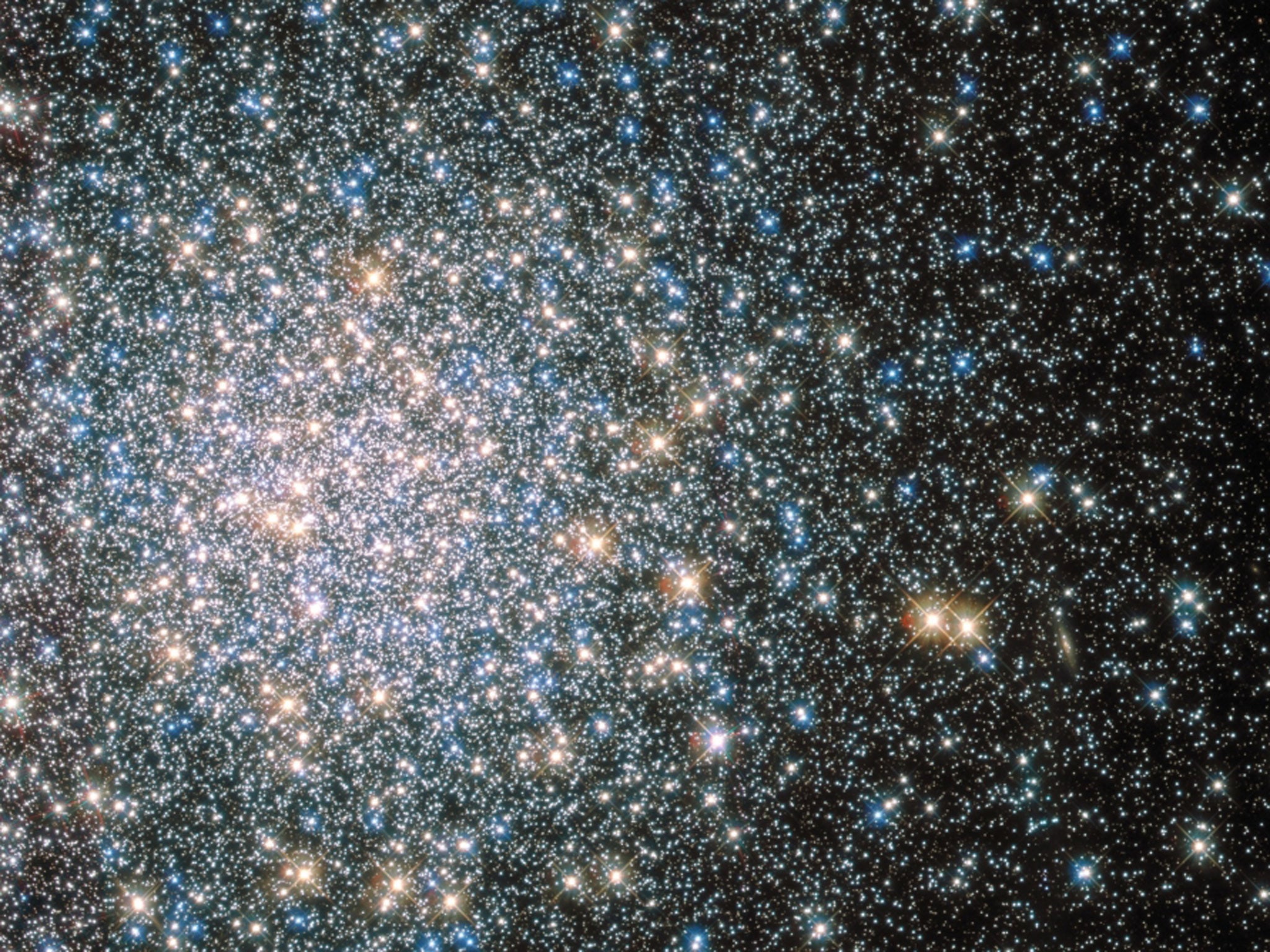Stunning ancient star cluster captured by Nasa Hubble Space Telescope
Image shows multi-coloured cluster of 100,000 stars that are 13 billion years old

Your support helps us to tell the story
From reproductive rights to climate change to Big Tech, The Independent is on the ground when the story is developing. Whether it's investigating the financials of Elon Musk's pro-Trump PAC or producing our latest documentary, 'The A Word', which shines a light on the American women fighting for reproductive rights, we know how important it is to parse out the facts from the messaging.
At such a critical moment in US history, we need reporters on the ground. Your donation allows us to keep sending journalists to speak to both sides of the story.
The Independent is trusted by Americans across the entire political spectrum. And unlike many other quality news outlets, we choose not to lock Americans out of our reporting and analysis with paywalls. We believe quality journalism should be available to everyone, paid for by those who can afford it.
Your support makes all the difference.Nasa has released a stunning image of a brightly coloured ancient cluster containing more than 100,000 stars captured by the Hubble Space Telescope.
The image depicts Messier 5, or M5, and includes a quote from 18th century astronomer Charles Messier's catalogue of clusters and other nebulae that begins: "Beautiful Nebula discovered between the Balance [Libra] & the Serpent [Serpens].”
This description suggests Messier believed M5 was a nebula, a cloud of dust, hydrogen and other gases, when developments in observation technology later revealed it was actually a cluster of stars.
Nasa said: “Though it appeared to Messier to be fuzzy and round and without stars, Messier 5 (M5) is now known to be a globular star cluster, 100,000 stars or more.”
The globular star cluster is bound by gravity and packed into a region around 165 light-years in diameter. It was discovered by German astronomer Gottfried Kirch in 1702 and lies some 25,000 light-years away from the Earth.
M5 is one of the oldest globulars and its stars are believed to be almost 13 billion years old, making it one of the oldest globulars to be associated with the Milky Way Galaxy.
“Even close to its dense core at the left, the cluster's aging red and blue giant stars and rejuvenated blue stragglers stand out in yellow and blue hues in the sharp color image”, Nasa added.
The Hubble Telescope was launched from the Kennedy Space Centre on 25 April, 1990 and celebrated its 24th year in orbit on Friday. The telescope's orbit outside of the Earth's atmosphere allows it to take high resolution images within almost no background light.
Join our commenting forum
Join thought-provoking conversations, follow other Independent readers and see their replies
Comments